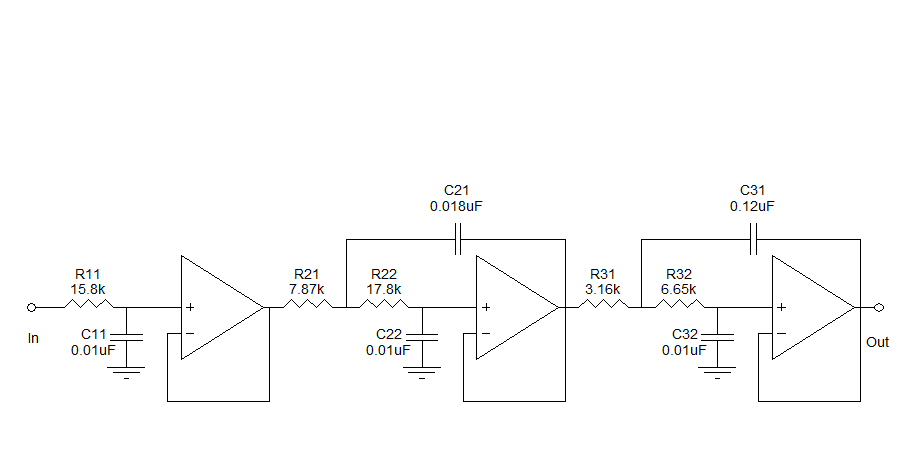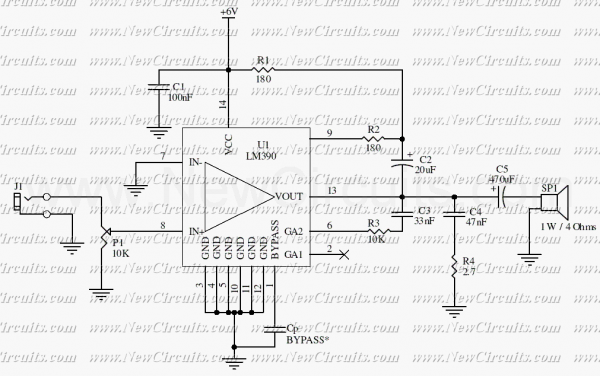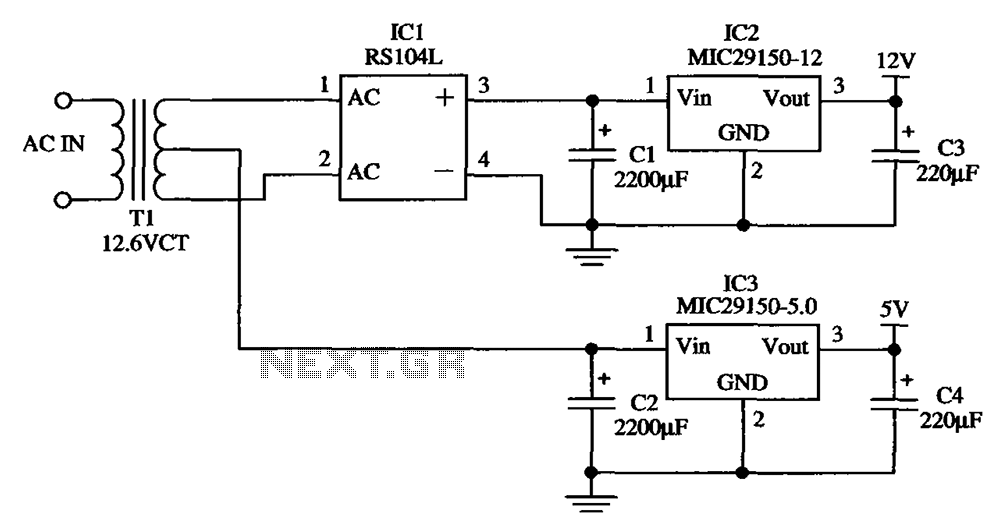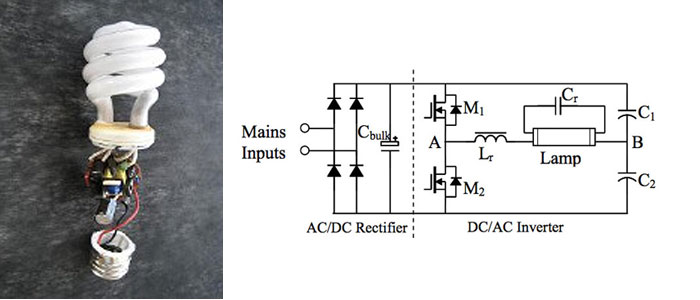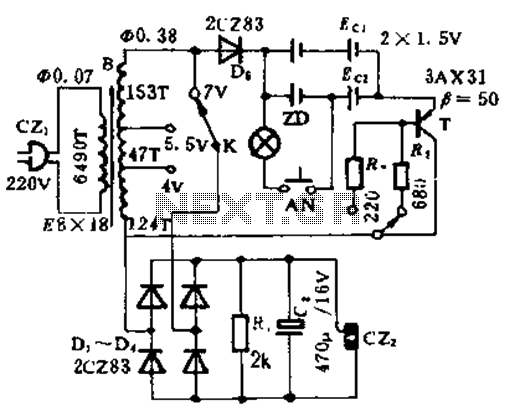
Constituted by the PGA103 programmable gain instrumentation amplifier circuit diagram
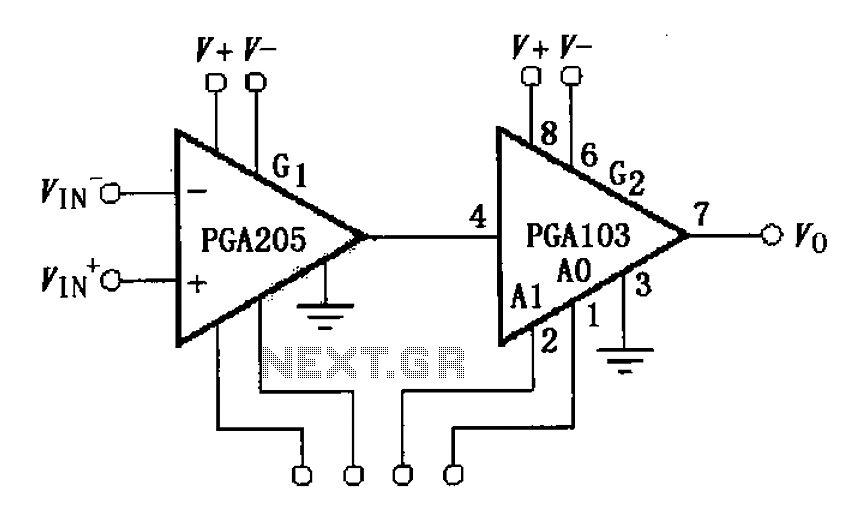
The circuit depicted in the figure comprises a PGA103 programmable gain instrumentation amplifier. This design utilizes the PGA205 and PGA103 in a cascading configuration, resulting in a total gain for the amplifier. The gain is determined by the product of the gains of the two amplifiers, denoted as G = G1 * G2. The gain settings for G1 are 1, 2, 4, and 8, while G2 can be set to 1, 10, or 100. By selecting different logic inputs, various gain levels can be achieved, with a maximum gain of up to 800. Other available gain configurations include 1, 2, 4, 8, 10, 20, 40, 80, 100, 200, and 400.
The PGA103 is a high-performance programmable gain amplifier designed for use in precision applications. It features low noise and low distortion characteristics, making it suitable for amplifying weak signals in instrumentation systems. The cascading arrangement of the PGA205 and PGA103 enhances flexibility in gain selection, allowing for a wide range of amplification tailored to specific application requirements.
In this configuration, the PGA205 serves as the first stage of amplification, providing initial gain settings through its selectable options. The output from the PGA205 feeds into the PGA103, which further amplifies the signal based on its own gain settings. This method of cascading amplifiers not only increases the overall gain but also improves the linearity and bandwidth of the system.
The gain selection is controlled through digital logic inputs, enabling quick and precise adjustments based on the needs of the application. This feature is particularly beneficial in dynamic environments where signal levels may fluctuate, requiring real-time gain adjustments to maintain optimal performance.
Overall, the PGA103 and PGA205 combination offers a versatile solution for applications requiring programmable gain amplification, such as medical instrumentation, industrial sensors, and audio processing systems. The ability to achieve a maximum gain of 800 while maintaining signal integrity makes this circuit an excellent choice for high-fidelity amplification tasks. As shown in FIG constitute grounds PGA103 programmable gain instrumentation amplifier. This circuit uses the PGA205 and PGA103 cascading manner, the total gain of the amplifier gain is the product of two amplifiers, namely G G1G2. G1 1,2,4,8, G2 1,10,100, choose different logic inputs can choose different gain, maximum gain of up to 800 (other gains were 1,2,4,8,10,20, 40,80,100,200,400).
The PGA103 is a high-performance programmable gain amplifier designed for use in precision applications. It features low noise and low distortion characteristics, making it suitable for amplifying weak signals in instrumentation systems. The cascading arrangement of the PGA205 and PGA103 enhances flexibility in gain selection, allowing for a wide range of amplification tailored to specific application requirements.
In this configuration, the PGA205 serves as the first stage of amplification, providing initial gain settings through its selectable options. The output from the PGA205 feeds into the PGA103, which further amplifies the signal based on its own gain settings. This method of cascading amplifiers not only increases the overall gain but also improves the linearity and bandwidth of the system.
The gain selection is controlled through digital logic inputs, enabling quick and precise adjustments based on the needs of the application. This feature is particularly beneficial in dynamic environments where signal levels may fluctuate, requiring real-time gain adjustments to maintain optimal performance.
Overall, the PGA103 and PGA205 combination offers a versatile solution for applications requiring programmable gain amplification, such as medical instrumentation, industrial sensors, and audio processing systems. The ability to achieve a maximum gain of 800 while maintaining signal integrity makes this circuit an excellent choice for high-fidelity amplification tasks. As shown in FIG constitute grounds PGA103 programmable gain instrumentation amplifier. This circuit uses the PGA205 and PGA103 cascading manner, the total gain of the amplifier gain is the product of two amplifiers, namely G G1G2. G1 1,2,4,8, G2 1,10,100, choose different logic inputs can choose different gain, maximum gain of up to 800 (other gains were 1,2,4,8,10,20, 40,80,100,200,400).
